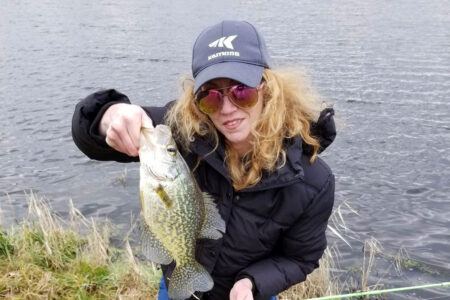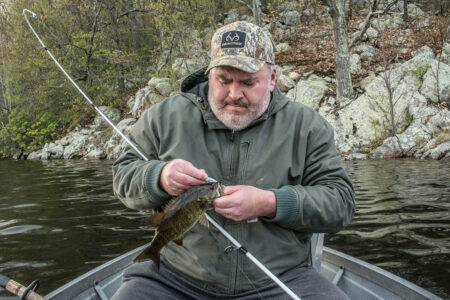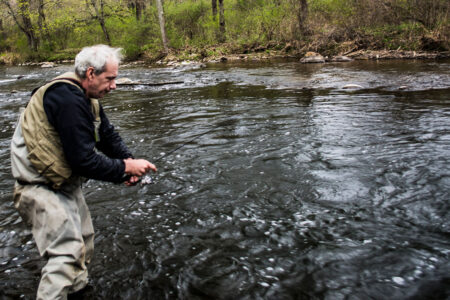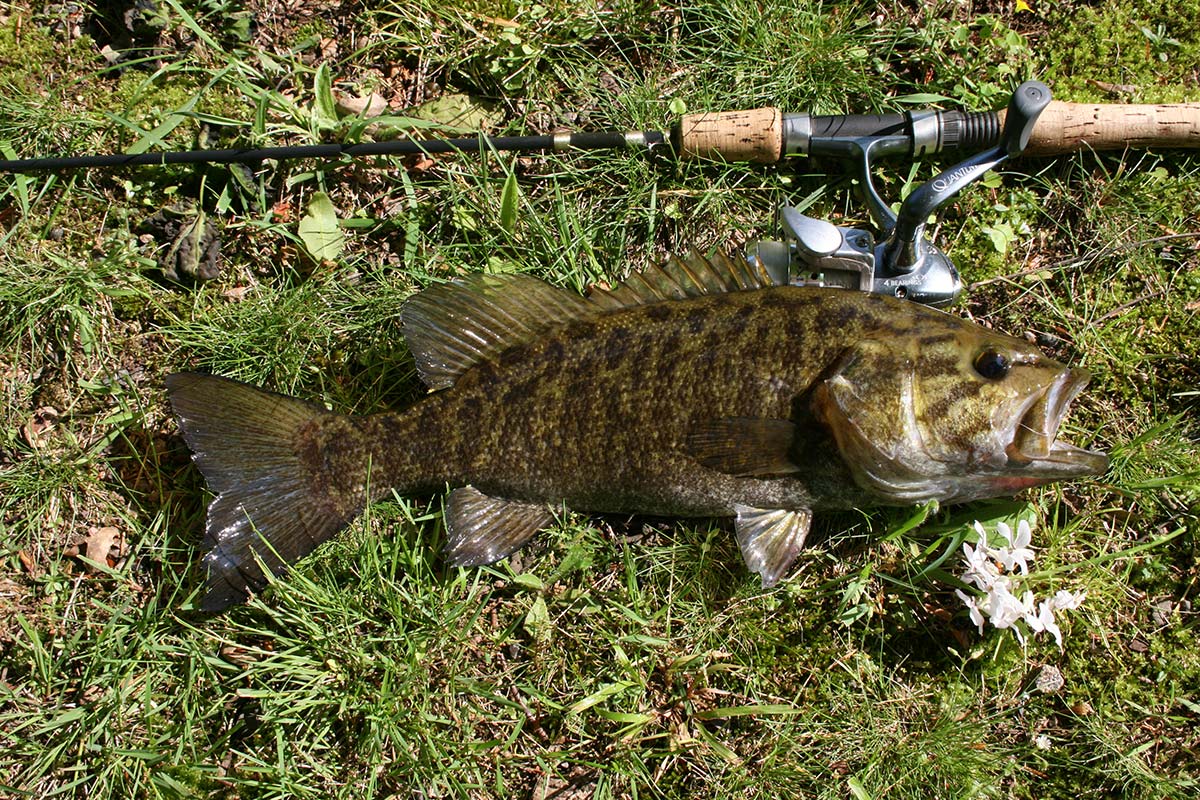
Wade into the smallmouth bass action this month.
It’s the late spring into early summer transition from trout to smallmouth bass that adds a new dimension to the river fishing experience. Gone are the stocking crowds and the holdover trout hunters. In the overwhelming majority of instances on those flows that house both, it’s the smallie that comes in to its own as the headliner, the trout preferring specific feeding times, sometimes after darkness falls.
Conversely, the smallmouth gorges from first light into dusk. And, on the swims where put-and-take is the trout norm, it’s the bronzeback that rules once water temps hit the mid-70s; but it’s the river experience that makes the bronze shine. Sure, there are bigger smallies in lakes and impoundments, but it’s the intimacy of the tighter, purling waters that give the species an opportunity to shine when it comes to ultralight spinning and fly rod presentations. On wider, heavier flows it’s generally a blend of still and moving water tactics as per the sheer size of the venue and its myriad structures and depths.
This is now basically hip boot or wet wade fishing; water temperatures are certainly comfortable enough, and it allows for an up close and personal contact. Coupled with the lack of angler presence plus the attitude of the ever-aggressive smallie, a quality experience is there for the taking. Remember that early summer stream bottoms can be slick with increased algae growth, and felt/stud bottoms can help avoid a spill. Should the flows be thick and a bit off color from recent rains, consider a wading staff. Even though the bank sides are narrow, stained skin can hide potential tripping spots.
Predicated on our choice of approach (hardware, live bait, fly) it’s either a lightweight vest for the former pair and a clip-adorned lanyard for the latter. A couple of small plastic boxes will hold miniature plugs, jigheads and grub tails, and small spoons and spinners. A hip bait box works for the likes of worms or hellgrammites. If using fatheads, they can be housed in a shoulder strap wading can. When flying it, the lanyard is outfitted with clippers, a hemostat and a clip on fly box loaded with an assortment of nymphs, dries, wets and small streamers.
This is prime ultra-light spinning time. Fast action/soft tip rods in the 5- to 6-foot and reels spooled with 2- to 6-pound mono are ideal. Unless a personal preference, the tighter confines and relatively shallow waters negate the need for braid.
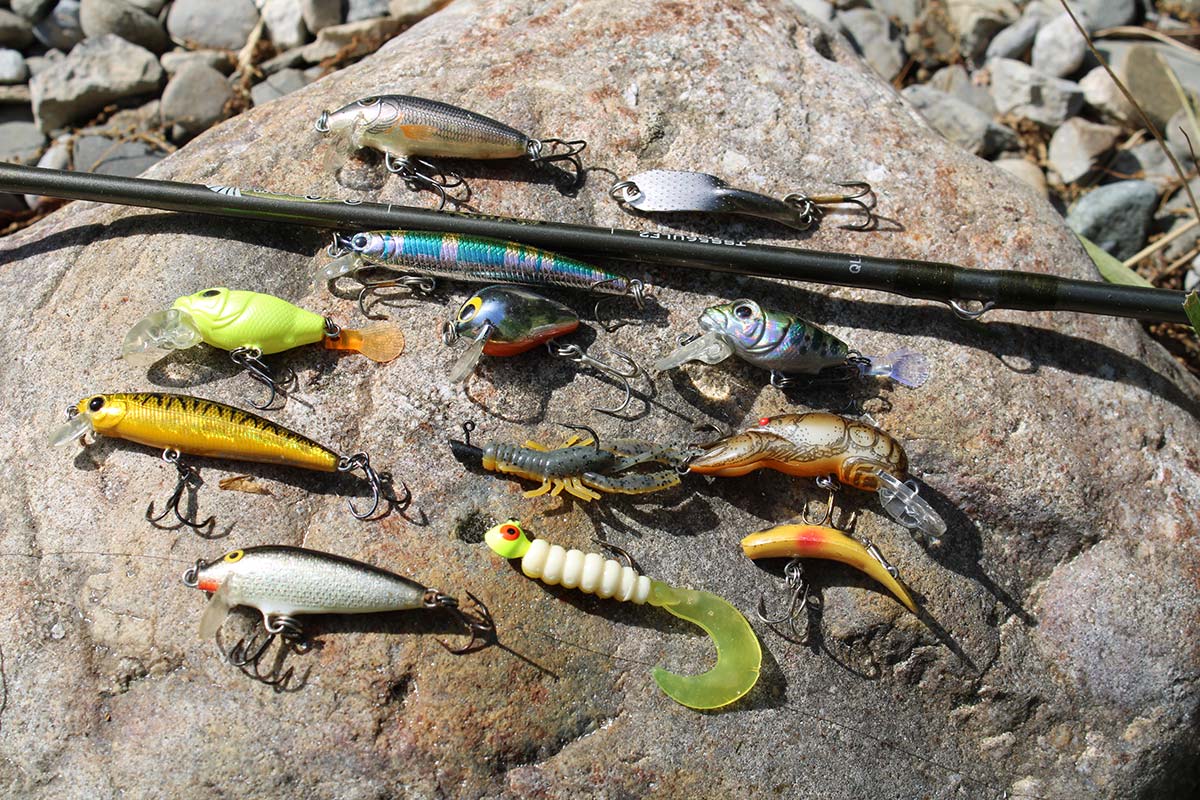
Downsized plugs prove a perfect heat source for melting early summer bronze. Smallies will zero in minnow, panfish fry (sunfish and rock bass usually inhabit the same waters) and crayfish imitations, especially those worked in a fashion depicting distress. No. 0 and 1 spinners and 1/8- to 1/12-ounce spoons on as slow as rotation so as to impart action to the blade and wobble to the spoon body will draw smallie strikes. Plastics play a part, with the 1/16-ounce jighead mated to 1- to 2-inch curly tail grub a sure hit. A huge find was the Trout Slayer from Leland Lures, manufacturer of the Trout Magnet lure series. This miniature crayfish impostor posed on the Trout Magnet jighead has proven a high octane small water bronze buster.
As for the meaty basic, fathead minnows, hellgrammites, baby nightcrawlers, crayfish and small shiners will elicit crunching assaults. We advise going barbless via a flattened barb or utilizing one of the barbless hooks on the market. Should the smallie swallow it all, clip the line close to the maw. Chances are it will rust and eventually be passed.
When it comes to flyfishing, the K.I.S.S approach is personified; no need for the plethora of fly boxes and multiple dozens of patterns associated with the far more selective brown and holdover/wild rainbows. Smallies want to eat, and eat some more. Our selection includes the likes of the Elk Hair Caddis, White and Royal Wulff, Irresistible, the Muddler Minnow (black and brown) and olive Wooly Bugger and White Maribou streamers, and the Royal Coachman, Black Gnat and White Miller wets.
In terms of locations, small water smallies will gravitate and hold to current breaks and seams, undercut banks/eddies, the tops of pools delivering the first flush of victuals and main body of the pool itself, particularly if interspersed with big rocks. With bronzebacks, it’s more of a snipe than chase predilection when it comes to picking off a passing victim, so be prepared for the quick hit.
